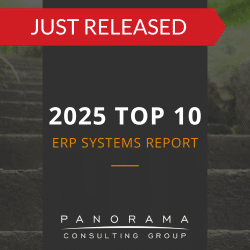For my money, managing a global ERP implementation ranks right up there with the hardest work-related tasks in existence. And, technical issues notwithstanding, the hardest part of this hard task might just be aligning corporate culture around a singular goal — especially if that culture varies widely at different sites. Alignment around an ERP project can be difficult to achieve when everyone’s in the same building — add the issues of varying language, communication methods, and cultural attitudes and you’ve got yourself a management challenge for the record books.
In Panorama’s experience, organizations that reap the most business benefits from their ERP systems are ones who keep a keen focus on organizational change management. While always necessary, this focus is perhaps never more needed than in an international enterprise software implementation — especially one that involves (as they all should!) mapping and standardizing non-differentiating activities. Below are some communication tactics to help you and your organization succeed:
Make sure the information is coming from the top. To show executive support and underlie the importance of the issue, it is absolutely necessary that the reasoning behind and benefit of the ERP implementation is communicated from the highest levels in the organization.
Make sure the messaging celebrates individuality but promotes unity. It is critical to acknowledge the individual strengths of each site — especially when standardization is coming down the pike — but equally critical is the promotion of the company as a whole, with each division working in harmony to achieve both organizational and ERP success.
Communicate a vision for the ERP implementation so clearly that every employee can articulate it. The organization’s vision may be crystal clear to the executive suite, but if every person in the company can’t say it back in his or her own words, than it’s not being absorbed and will probably never be met.
Determine and communicate three to five tactics that the company must pursue, in unity, to achieve the vision. Visions can be frustratingly theoretical; break it down to tactics that each site of the company can and must work to actualize. Make the tactics the same at every location (and communicate as much) to ensure everyone knows they are on the same playing field.
Determine and communicate key performance indicators to track progress against those tactics. This is key — without measurements of performance organizations will never know how or if their tactics are being utilized effectively. KPIs also might spark some healthy competition between sites — leading the company to success even faster.
The lack of solid organizational change management can and will lead to ERP failure. To learn more, be sure to attend Thursday’s webinar, Five Key Organizational Change Management Challenges With ERP.












